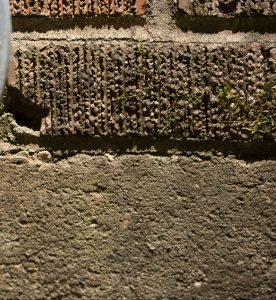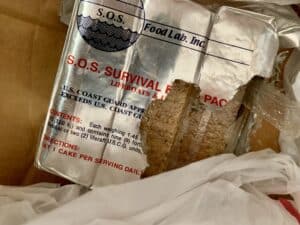Last Updated on October 10, 2024 by Alice Benny
Learn what attracts mice and rats to your home and yard so you can prevent an infestation. These critters are very destructive. It’s easier and less expensive to keep them away than to get rid of a rat problem.
Preventing them through rodent exclusion is essential. Rat exclusion is eliminating opportunities for them to enter your home. This includes sealing up entry points and removing food sources so you aren’t attracting them. Bookmark how to get rid of rats in your house, and keep reading below so you can stop attracting rats.
Do these things sooner rather than later to prevent future damage.
What attracts rats
You can have rats any time of year but they are more common in the colder months. In the fall and winter, rats seek warmth and shelter from the cold and a source of food and water. Make it difficult for them to enter your home.

What attracts rats to your house
- Entry points
Rats will make their way through holes and cracks. If your home has any gap larger than half an inch (1.3 cm), rats can find their way inside.
Check around the perimeter of your home for any entry points. Also be sure the garage, foundation, roofs, roof soffits, vents, areas around the HVAC system, and more are sealed. Install kick plates to doors. Consider sealing doggy doors (also called pet doors).
If you see rats or mice outside or inside your home, act immediately. Learn how to get rid of rats.
- Food sources
Eliminate any source of food. Think about any potential feeding sites you have. If your family eats outside on the patio, be sure to clean the area of food debris completely. Do not leave food outdoors at night. Rats have a strong sense of smell.

Consider potential feeding spots near your home. This can include pet food bowls and water bowls. If you leave them out during the day, be sure to bring them in at night.
Don’t leave food on the floor in your home, especially near outside walls, windows, and doors. Seal food in airtight containers. If you’ve had rats or mice in the past, completely clear food scraps from under appliances by pulling them out and sweeping the area and washing the floor.
What attracts rats to yards
- Trash bins
Be sure recyclable bins and garbage cans are completely sealed with tight-fitting lids. Do not leave garbage bags out, especially if they contain food waste. Don’t leave unsecured trash in basements, garages, and more.
- Livestock and pets
If you are raising chickens, horses, or other outdoor animals and livestock, their food and droppings can attract rats. Be sure to store their food in airtight, rodent-proof storage containers. Also, mice and rats can be attracted to straw and hay.
- Piles
Consider what you have in your yard and around your property. If you have piles of debris, firewood, wood, tires, and more, you may be providing a dwelling for rats. Clear piles. If you have them, keep them away from your home.
In addition, think about clutter piles you may have in your garage, attic, and other areas.
- Compost heap
Rats will be attracted to compost piles as it will be a food source. Instead, use a compost tumbler which is enclosed. In addition to a food source, outdoor compost and debris piles can also provide shelter for rodents.
- Plants
Rodents have been known to nest in ground cover and ivy such as creeping charlie. Clear it when possible.
In the southwestern United States, packrats make nests in agave and other desert plants. They feed on cholla and other plant parts and seeds.
Rats will also be attracted to fruit trees. Ripe fruit that falls to the ground is particularly enticing. They will also eat nuts from trees.
- Vehicles
Also in the southwestern part of the United States, where packrats are a concern, these rodents will nest in cars and trucks left out at night. To prevent this, set up a solar light underneath the vehicle.
This is why it’s important to know the type of rodent that’s common in your area. Roof rats and Norway rats are different from packrats.
- Bird feeders
Consider also if you are feeding birds through a birdfeeder close to your home. Rodents will be attracted to the bird feed, peanuts, and more. They will be able to access them no matter if hanging from trees or as a standalone feeder.
- Water source
Rats need a daily source of water. Therefore, it’s important to remove water sources. In dry seasons and in drier climates, rats can seek water from birdbaths and other standing water near your home.
In addition to pet bowls, walk your backyard to check for puddles, water collecting in rain gardens and in other areas in which water is diverted. Check for leaking faucets, dripping sprinklers and hoses, garden hose splitters, and condensation on appliances, including an extra refrigerator or freezer in a garage or shop.
- Storing food in shed, garage
Don’t store food in garages, sheds, or other areas that rats can enter. Learn how to store food long term so you don’t entice rodents. They are interested in all types of food.
Rat exclusion
Whether or not you see rodent activity, it’s important to proactively be considering rodent control methods to ensure you aren’t attracting them. To do this, rodent experts recommend filling all cracks and holes with steel wool or concrete.
Mice and rats can fit into tiny spaces. Sealing off entry points is a way to be sure you aren’t unwillingly inviting them into your home.
You can take steps to rat-proof by using scents to repel rats. They do not like the smell of peppermint oil or bleach. You can dab either on cotton balls to put under the cushions in outside furniture to help keep them away.
Traps and poison baits
If you want to attract rats in order to trap them, consider a catch and release trap. You can bait traps with pet food, bacon, peanut butter, or nuts. They are each an attractant for rodents. Poison baits are also an option.
Owls
Learn how to attract owls to your property. Hanging owl boxes can go a long way to control a rat and mouse problem naturally.
FAQs about attracting rats and mice
What causes rats to come in your home?
Anytime, but especially in the fall and winter as it’s colder, rats seek warmth, shelter, sources of water, and food. Any gaps and openings that are wider than .5″ means a rat can fit through. Eliminate all cracks, fill gaps, etc. to make it difficult. If you set dog and cat food and water bowls outside in the day, bring them indoors at night.
What attracts rats to your house?
Rats are always on the lookout for food. Dog food bowls sitting outside your home will attract rats to your house. If you have food stored outside, you could be unknowingly attracting rats. Birdseed in feeders can attract rats. Anything on your porch or deck that can provide warmth or shelter or food will attract rats to homes. This can be a hammock, patio cushions, ropes, etc.
In the colder months, rats will be seeking shelter. They will be attracted to warm areas.
Prevent rats
Learning what attract rats to your home will help prevent them from finding their way in, and causing damage through nesting and gnawing. Notice signs of droppings.
Using rat exclusion techniques will ensure you don’t attract them in the first place. If you’ve heard the saying, “an ounce of prevention is worth a pound of cure,” it’s very applicable to setting up your home, garage, and yard so you don’t attract them.
When you consider how long rats live and how quickly they multiply, it’s far easier to prevent rats than deal with a colony and rodent infestation.
Many things attract rats and mice, especially in the cold months. Make it so they won’t be able to set up residence in yours.

How To Get Rid of Rats in House Fast
If you hear scurrying at night, or notice droppings or damage, you must address the problem immediately. You can get rid of rats on your own. Learn how to get rid of rats using these easy methods which we explain below:
- Identify rat entry points
- Seal off entry points
- Remove feeding sites and attractants
- Learn their habits
- Trapping
- Poison and rodenticides
- Scents to repel rats
- Rat exclusion
It's important for you to take steps to eradicate rats AS SOON AS POSSIBLE. Rats reproduce rapidly. The longer you wait, the more rats you will have.
Instructions
Identify rat entry points
- Foundation
- General building exterior
- Roof, roof soffits
- Chimney
- Vents
- Attic, crawl space
- Service lines, breaker boxes
- Door frames, windows
- Garage doors
- Dryer vents
- Oven gas lines
- HVAC system and ductwork
- Areas surrounding pipes
- Through sewer pipes
- Letterboxes attached to homes
Seal rat entry points
- Spray foam insulation
- Caulk
- Cement
- Rat-proof wire mesh
- Steel wool
- Hardware cloth
- Galvanized metal
- Kick plate for doors
- Identify feeding sites
- Black light
- Listen at night
- Dust areas with flour
- Droppings
Rat traps
- Snap traps
- Live traps
- Glue traps
- Rat poison
- Rodenticides
- Attract Owls ~ Owls eat rats
Scent that will keep rats away
Scents that will rats away from your home use natural ingredients, it’s actually a better alternative than using traps that may inadvertently kill them.
- Peppermint Oil
- Beaver Oil
- Citronella Oil
- Chili peppers (the hotter, the better)
- Onions
- Bleach
Rat exclusion
Call a pest control company
Notes
How long does it take to get rid of rats?
Short answer: It depends. If you are dealing with a small rat population, it could take a week or two to get rid of them completely. However, if the infestation is large enough, it will take longer, especially if this happens in larger spaces and buildings.
If you see rats during the day, it's likely there is a rat infestation. This means you will have more than a few rats. This may be in the later stages. Rats are active at night, not during the day. In this instance, it's best to call a local pest control professional.
